Free the Fish: New Culverts Open the Pepin Creek Fish Passage
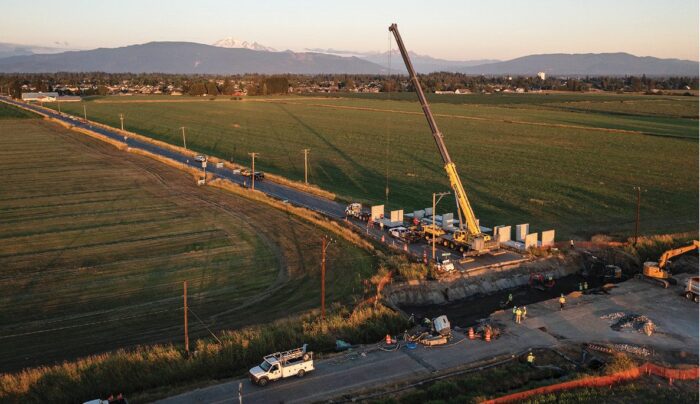
An aerial view of the installation site for Pepin Creek Fish Passage in Bellingham, Wash.
In March 2013, the U.S. District Court in Washington state ruled in favor of 21 Native American tribes and required the state to significantly increase the existing effort to remove all state-owned culverts that blocked salmon and steelhead migrations by 2030.
Washington state’s mandate: replace the old structures with a larger solution that supported the native stream beds, including using rock and dirt. Expanding the size of the existing culverts—to result in a natural creek—was a challenge.
This led to a statewide rush to begin working on the targeted culverts immediately. One in particular rose to the surface due to its complexity: the Pepin Creek Fish Passage in Bellingham, Wash.
The Challenges
1. These older and smaller existing structures were built to allow water to flow through, but not fish. It became clear that a larger culvert, thereby replicating a natural stream, would be the required and acceptable solution for hundreds of sites statewide.
2. Time constraints. For the Pepin Creek Fish Passage, the contractor was given three days to deliver and complete the complex three-culvert project, which included multiple products and structures. The short time window created uncertainty across the board. The project would need to be completed in a compressed design to include the entire approval process and fabrication timeline. Whereas a project such as this may normally deal with one culvert, with construction and installation being spread out through a traditional timeframe, the Pepin Creek Fish Passage was a three-culvert project, and 100 percent of the installation had to take place in a 76-hour period.
3. WSDOT’s acceptance process of inspection, review and stamping added another level of complexity.
4. The fish window. Complete installation must happen prior to the annual fish run to not disrupt nature.
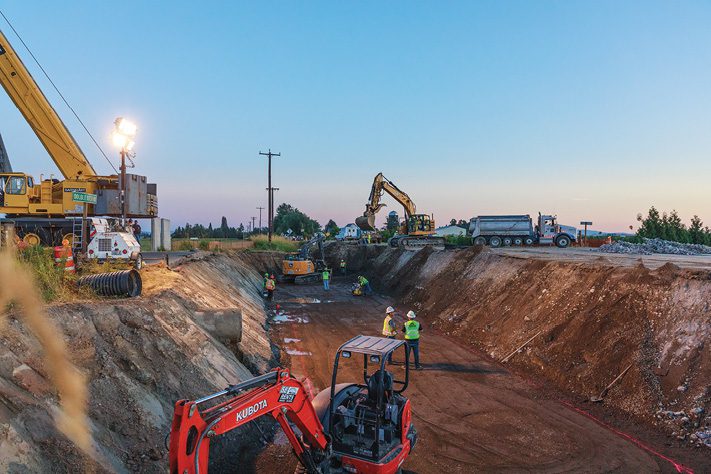
Site preparations for the Pepin Creek Fish Passage. Crews must grade the area to ensure proper water flow.
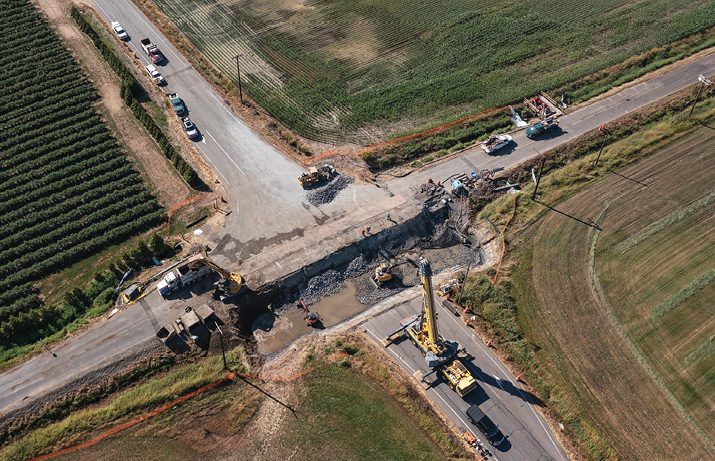
A photo shows early site prep excavation and grading.
The Solutions
Granite Construction Inc., headquartered in California with 28 locations throughout Washington state, was chosen as the contractor of record for the Pepin Creek Fish Passage.
“With a project of this complexity on this challenging timeframe, we needed the right partner, and we chose Oldcastle Infrastructure,” said Lance Chambers, Granite Construction. “They are a single-source company, meaning the engineering team, the project leads, the plants, the capacity and the experience—it’s all under one roof. The Oldcastle team was very responsive from the beginning and worked within a very short timeline to develop and submit the design needed. That dexterity and experience was one of the reasons we completed the project as projected.”
Founded a century ago, Granite Construction is guided by a series of core values that are fundamental to who they are as an organization. With a strong focus on safety for all as well as workplace and employee integrity, the company is known for its high-performance culture of continuous improvement.
Based on previous experience in reengineering culverts for the purpose of dramatically improving sustainable fish passages—and following an open-bid process—Granite Construction chose Oldcastle Infrastructure as its single-source provider for the Pepin Creek Fish Passage.
The staff at Oldcastle Infrastructure immediately went to work, calling upon its inhouse engineering department and contractors to design a solution to fit the project’s intricate needs. This required a six- to eight-month manufacturing timeframe to include project management and coordination as well as seamlessly deliver multiple products and structures required for this project, all within the tight installation window.
Oldcastle Infrastructure provided project management, design/engineering expertise, manufacturing, quality control, delivery logistics, installation support and a single source of supply for the chosen split box culverts (offering a service life of more than 100 years). Quality specifications demanded that the three new culverts be dry fit and preassembled in the plant.
With so many critical pieces to the project, thorough planning and departmental teamwork were required for success. The project was prioritized with design, engineering, project management, manufacturing, delivery coordination and installation assistance each meeting specific milestones to result in a successful project.
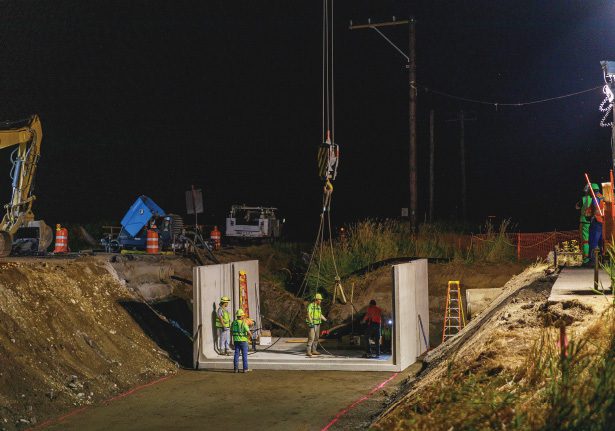
Crews begin laying the three-sided culvert. A top slab will cover the top and serve as the foundation for the roadbed above.

Final site preparations prior to box-culvert installation.
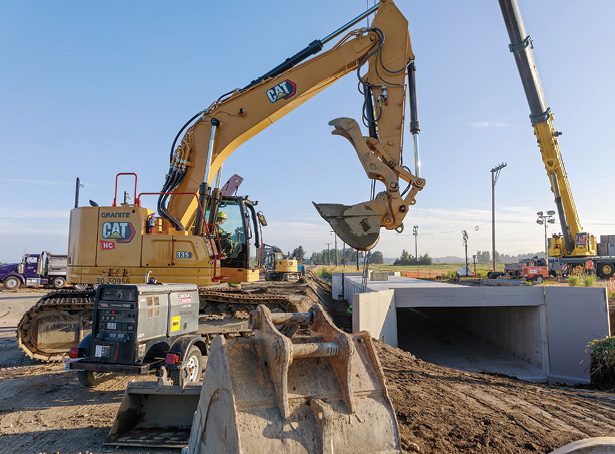
In this photo, the main box-culvert installation is complete, and outflow wing walls are being installed prior to backfill.
The Process
To remain on track, the project was prioritized internally: each team met specific milestones designed to result in a successful project. The goal: a larger and wider fish passage to allow fish to flow through naturally without being limited or changing their migration patterns, thus returning the stream back to its original function.
From start to finish:
• Hydrologists and biologists were brought onboard to determine the natural span and depth of the stream.
• The existing old 4×4 box culvert, much too small for what was needed, was removed. The small structure was designed for water to flow through, but didn’t allow the rest of the ecosystem passage, including the fish.
• A much-larger solution was designed, with no columns in the middle and nothing else separating the water into sections and potentially detouring the fish. The new solution would provide an unobstructed, natural streambed.
• Due to the height of the three new culverts, it was necessary to dry-fit the assembly of components in the plant.
• To meet the tight timeframe constraint, a transportation logistics team oversaw the loading of 60 trucks with 140 loads that left every 15 minutes.
• For the road: culvert pieces were placed strategically throughout the day and night to meet the determined timeframe and return the road to full operation prior to the opening of the State Fair.
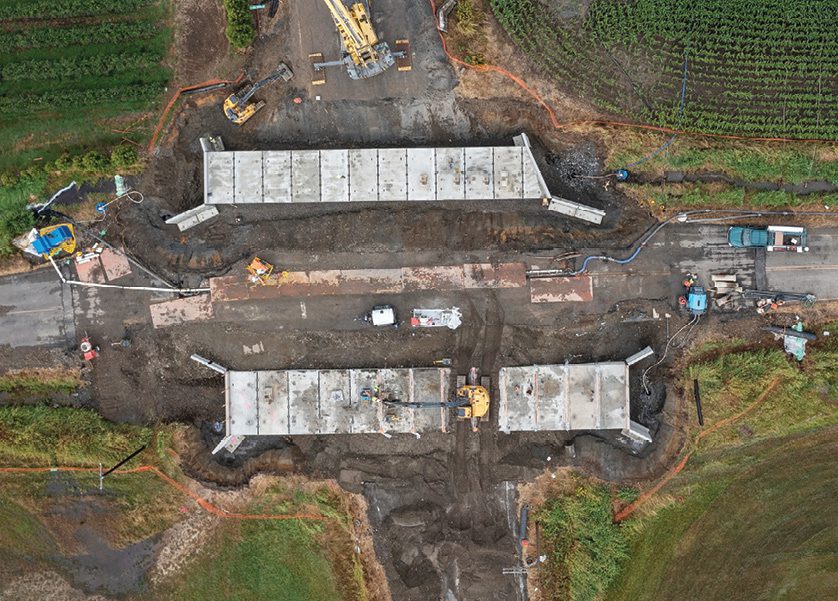
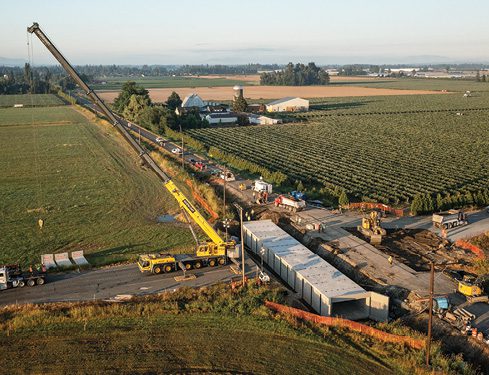
Aerial view of jobsite prior to completion.
The Results
All went well, and the project was completed on-time and on-budget. Water started flowing immediately, and the road was returned to use in plenty of time.
Beyond time, budget and specification parameters of the enlarged structure, the ultimate benefit was much larger: the restoration of historic salmon and steelhead runs that had been interrupted for decades. The opportunity to recreate these natural migration patterns as part of a sustainable ecosystem is historically significant.
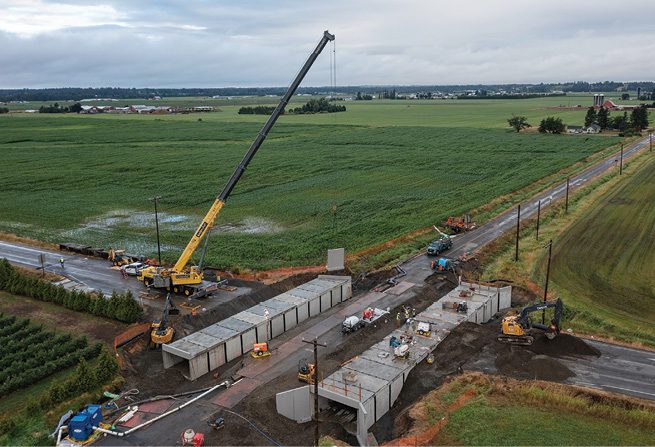
In this image, crews are completing wing-wall installation and backfilling around each box-culvert run to start final site completion.
“Restoring fish and wildlife habitats fits in naturally with Oldcastle’s overall commitment to sustainability, and we are proud to have partnered with WSDOT to complete more than 100 fish-passage culvert projects in the last several years, improving access to hundreds of miles of blocked salmon and steelhead habitats,” said Doug Myers, project lead with Oldcastle Infrastructure. “Not only has the Department of Fish and Wildlife found fish spawning upstream at over half of the completed WSDOT fish-passage project sites, but the opportunity to recreate these natural migration patterns as part of a sustainable ecosystem is historically significant.”
About Johann Gutierrez
Johann Gutierrez is the area general manager/Pacific Northwest, Oldcastle Infrastructure, a CRH company; email: [email protected].


